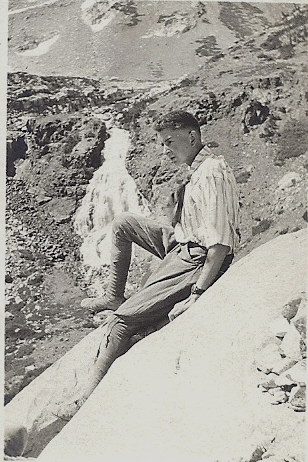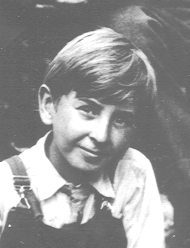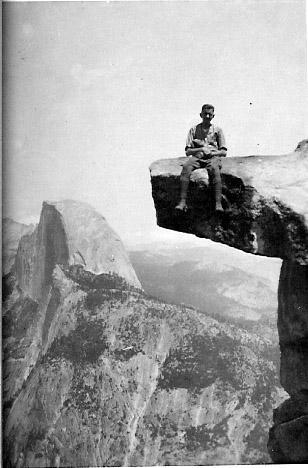We're committed to helping you
Arthur Francis Pillsbury
From: Pillsbury Family
ARTHUR FRANCIS (10) (Arthur Clarence, Harlin Henry) b. 11 Oct. 1904 in Hollywood, CA. (132 N. Palm Dr., 1/2 block N. of Hollywood Blvd.) m. Mary Alice Reasoner on 24 June 1933 in Berkeley, CA Children:
i. Anne AEtheline , b. in Oakland, CA 22 July 1934 (married Paul Francis Gripp in Los Angeles, CA 13 April 1957.
ii. Carol Sylvia, b. in Riverside, CA 18 Jan, 1937. (married Gary Lee Michael Holbert, in Los Angeles, CA on 26 Feb. 1955. d. 12
Feb. 1974.
iii. Charles Arthur, b. in Los Angeles, CA on 10 May 1945. Married Susan Knox in Danville, CA 7 Sept. 1973.
iv. Mary Linda, b. in Los Angeles, CA 29 Oct. 1948. Married three times (see subsequent entry)
v. Stephen Martin, b. in Los Angeles, CA 22 Nov. 1950. Married Wendy Perry.
Resided in Los Angeles, CA until Oct. 10, 1911. Moved to Oakland, CA where attended Clarmont Grammar School, and University High School (grad, June 1923). Attended Stanford University, Oct., 1923 to June 1930 (except for one winter and two spring semesters when I dropped out because of finances.) A.B. in Engineering in 1928, Engineer in Civil Engineering, June 1930. Held everal short jobs 1930-1932. Joined staff of Division of Irrigation Investigations and Practice, College of Agriculture, University of California, Berkeley, as Junior Irrigation Engineer as of 11 March 1932. Except that I served as Assistant Conservationist, California Forest & Range Exp. Sta. U.S. Forest Service in 1933-1934 fiscal year, I have been with the University continuously since. In January 1936 transferred to Riverside campus; in June 1939 transferred to Los Angeles campus to position of Professor of Irrigation and Soils in the College of Agriculture, Irrigation Engineer in the Agriculture Experiment Station and Professor of Engineering in the College of Engineering, Los Angeles. 1960 named Director of the Water Resources Center for the University System, based at UCLA. In 1965 served as a consultant for a year at the Food and Agricultural Organization of the United Nations. Served in various capacities as a consultant in California and then on the first EPA Committee of Congress. Retired, 1971, moving to Springville, California. Continued to do consulting work until 1990. Died April 12, 1991 in Santa Barbara, California. Obituary, UC Archive, CaliSphere
Dr. Arthur Francis Pillsbury
Dr.Pillsbury attended Stanford University, following his parents example, beginning in 1923. He received his A.B. in Engineering in 1928, Engineer in Civil Engineering, June 1930. Pillsbury joined
the staff of Division of Irrigation Investigations and Practice, College of
Agriculture, University of California, Berkeley, as Junior Irrigation
Engineer as of 11 March 1932.
After earning his PhD from Stanford in 1933, he was hired to design programs for the Civilian Conservation Corp., in California, serving as Assistant Conservationist, California Forest & Range Exp. Sta. U.S. Forest Service in 1933-1934 fiscal year.
From 1934 on he was employed by the University continuously, later doing independent consulting. In January 1936 he was transferred to the Riverside campus; in June 1939 he was again transferred to Los Angeles campus to position of Professor of Irrigation and Soils in the College of Agriculture, Irrigation Engineer in the Agriculture Experiment Station and Professor of Engineering in the College of Engineering, Los Angeles.
In 1960 he was named Director of the Water Resources Center for the University System, based at UCLA. In 1965 served as a consultant for a year at the Food and Agricultural Organization of the United Nations. Served in various capacities as a consultant in California and then on the first EPA Committee of Congress.
Pillsbury retired, 1971, moving to Springville, California. Continued to do consulting work until 1990. Died April 12, 1991 in Santa Barbara, California.
Early Life
Arthur F. Pillsbury, was adopted legally by his uncle, Arthur Clarence Pillsbury on November 13, 1911 along with his two older siblings. Young Arthur had turned seven on October 10th, sharing birthday celebrations with his God Father.
Arthur's birth father was Dr. Ernest Sargent Pillsbury, Arthur C.'s older and only sibling still living. Arthur C. went to court to gain custody of the children, who he had immediately removed to Oakland.
It was a very close family with strongly shared values. Along with standing as God Father, Arthur wanted to see them grow up with the same values he had learned from his parents, Drs. Harlen and Harriet Pillsbury.
Self-reliance, honesty, kindness, and a deep commitment to doing right and self-improvement were part of those values.
When the court assigned conservatorship of Ernest and Sylvia's large estate, and the children, to Title Insurance Company in a move which ignored the good of the children he did not hesitate. Title Insurance, almost bankrupt at the time, had taken the opportunity to milk an estate left vulnerable because neither Ernest of Sylvia had left a Last Will and Testament.
Young Arthur when he was fourteen
The children, who had also been injured in the auto accident which killed both of their parents September 4, 1911, were even denied the closure of knowing their parents were buried. Title Insurance, ignoring simple decency, held on to their remains until after the probate was closed, when they were all adults.
For young Arthur, life with his new father, held many wonderful moments. When I was interviewing him after he asked me to take on the task of ensuring his father's legacy was understood, the question arose of who was he thought of as his father. Multiple people had tried to tell me Grandfather was only his 'uncle,' but since Grandfather had adopted the children this was legally untrue. But was it emotionally true?
Father smiled, saying, “He was my father in every way that matters. I loved him for his kindness, his example of hard work, his delight in small things, his attention to me, and knowing when I needed someone, just to talk. He opened up new worlds for me, for everyone around him and delighted in their successes.”
Father received his Pd. D from Stanford in Civil Engineering and told me, as his father had told him, to find a work which you love doing – then find a way to get people to pay you to do it.




